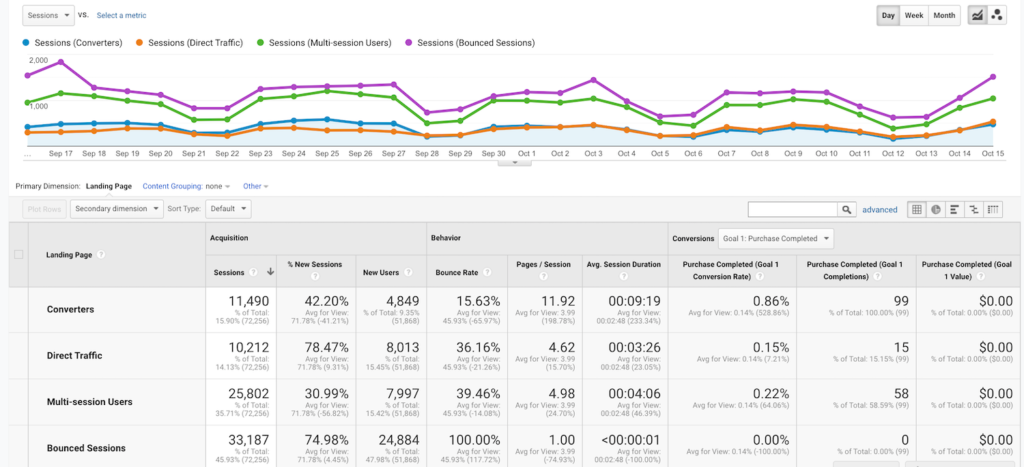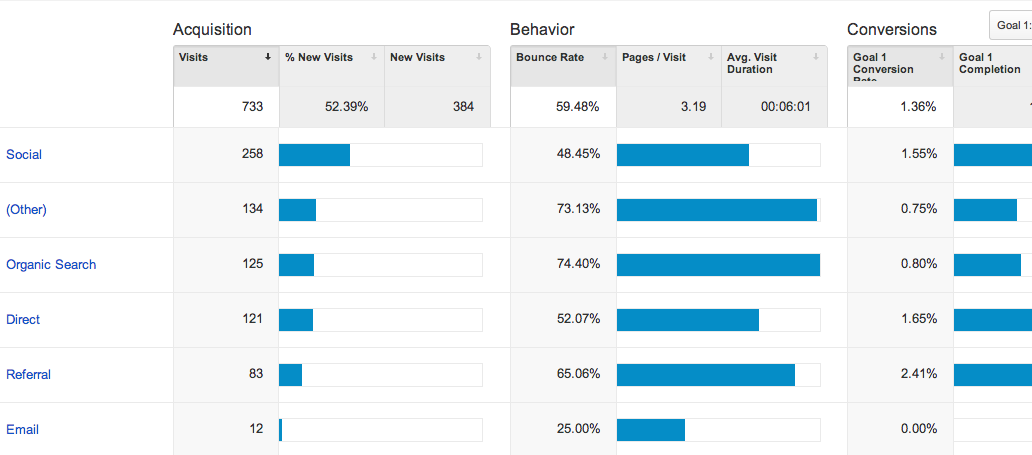Discover What Data Is Google Analytics Goals Unable to Track
Wiki Article
Discover the Limitations of Google Analytics Goals: Introducing the Data Types That Remain Untrackable
As companies significantly depend on data-driven decision-making, comprehending the restrictions of tools like Google Analytics comes to be paramount. While Google Analytics Goals deal beneficial understandings into customer interactions, there exist information kinds that avoid monitoring, positioning obstacles to an extensive understanding of customer behavior. These untrackable data kinds question about the precision and efficiency of the analytics data that companies heavily count upon for their electronic techniques. Curious to uncover the covert dead spots in your data evaluation procedure?Insufficient Individual Trip Tracking
Insufficient individual journey tracking within Google Analytics can hinder the capacity to properly analyze individual habits. When the customer journey is not fully tracked, there are gaps in the data that stop a comprehensive understanding of exactly how individuals connect with a website. This lack of insight can lead to missed opportunities for optimization and improvements to the user experience.One usual concern with insufficient individual journey tracking is the inability to see the complete course that individuals take before completing an objective or leaving the website. Without this info, it is challenging to determine where users may be running into obstacles or rubbing factors that avoid them from converting. Additionally, insufficient tracking can obscure the effect of certain advertising and marketing efforts or site adjustments on individual behavior.
To resolve this restriction, it is critical to set up correct tracking devices within Google Analytics to catch the entire customer journey. This might involve establishing event monitoring, goal funnels, or making use of devices like Google Tag Manager to make certain that no crucial interactions go unrecorded. By gaining a thorough view of the user journey, website proprietors can make more educated decisions to boost individual engagement and drive conversions.
Acknowledgment Difficulties
Navigating via attribution challenges in Google Analytics calls for a detailed understanding of exactly how various touchpoints add to the total conversion process. Acknowledgment difficulties arise from the intricacy of modern client trips, where users interact with multiple channels before transforming. Google Analytics provides numerous attribution designs like initial touch, last touch, and straight, each supplying a different point of view on just how credit score is assigned to touchpoints along the conversion path. These versions might not always accurately show the real influence of each touchpoint on the conversion.One common acknowledgment difficulty is the problem in associating conversions to the correct resource, specifically in instances where individuals interact with numerous channels before converting. This can cause mistakes in determining which marketing initiatives are driving one of the most conversions. In addition, cross-device monitoring presents one more attribution challenge, as users typically change between devices throughout their journey, making it challenging to track their communications seamlessly. Marketing experts have to carefully analyze and interpret attribution information to make educated decisions and optimize their marketing strategies efficiently.
Offline Conversions
Offered the challenges connected with connecting conversions accurately in online networks, the dimension of offline conversions presents a substantial opportunity for online marketers looking for a much more thorough understanding of their customers' journey. Offline conversions describe activities that customers absorb the real world, such as making purchases in brick-and-mortar stores or over the phone, going to occasions, or involving with printed materials - what data is google try this out analytics goals unable to track. These conversions are crucial for services that operate both online and offline, as they supply beneficial insights into the performance of advertising campaigns across numerous touchpointsTracking offline conversions traditionally presented a considerable difficulty for marketing experts, as it was challenging to link these activities back to certain online communications properly. However, with improvements in innovation, such as the integration of CRM systems, unique identifiers, and discount coupon codes, businesses can currently bridge the void in between online and offline information to acquire a much more holistic view of customer actions. By effectively gauging offline conversions, online marketers can why not try these out maximize their methods, allot resources extra successfully, and ultimately enhance the total customer experience.
Cross-Device Monitoring
Cross-device tracking plays a crucial duty in recognizing the interconnected nature of consumers' digital communications across numerous devices. In today's omnichannel globe, where users seamlessly change between tablets, desktop computers, and mobile phones, tracking their actions across these gadgets is crucial for marketing experts to obtain a thorough view of their customer trip.
Additionally, personal privacy issues and policies such as GDPR and CCPA have even more complicated cross-device monitoring. With individuals requiring even more control over their data and increased constraints on tracking modern technologies, marketers have to discover privacy-compliant and ingenious ways to connect customer interactions across devices.
Dynamic Web Content Interaction
Recognizing user engagement with vibrant material is essential in optimizing electronic advertising strategies for enhanced audience interaction. Dynamic content refers to site components that alter based upon user habits, preferences, or other elements, providing a tailored experience. Nonetheless, tracking individual interactions with vibrant web content positions challenges for standard analytics tools like Google Analytics.While Google Analytics can track basic communications like clicks and web page views, it might struggle to record more nuanced engagements within dynamic material. you could try here what data is google analytics goals unable to track. Metrics such as time invested on details vibrant components, float actions, or interactions within pop-ups are usually not quickly quantifiable using basic monitoring methods. This constraint prevents online marketers' ability to totally grasp exactly how individuals are involving with vibrant material and tailor their approaches accordingly

Verdict
In final thought, Google Analytics objectives have limitations in tracking incomplete customer trips, connecting conversions precisely, catching offline conversions, tracking cross-device communications, and measuring dynamic material engagement. These restraints highlight the importance of exploring additional tracking approaches and devices to obtain a more comprehensive understanding of user actions and conversions beyond what Google Analytics can supply.While Google Analytics Goals deal valuable understandings into customer interactions, there exist information kinds that avoid tracking, presenting obstacles to a detailed understanding of user behavior.Insufficient individual trip tracking within Google Analytics can impede the capability to properly examine user habits. When the customer journey is not completely tracked, there are spaces in the information that prevent a detailed understanding of how individuals interact with a site.One typical issue with incomplete individual journey monitoring is the lack of ability to see the full course that users take previously finishing a goal or leaving the website. By acquiring an extensive sight of the individual journey, site owners can make more enlightened choices to enhance customer engagement and drive conversions.
Report this wiki page